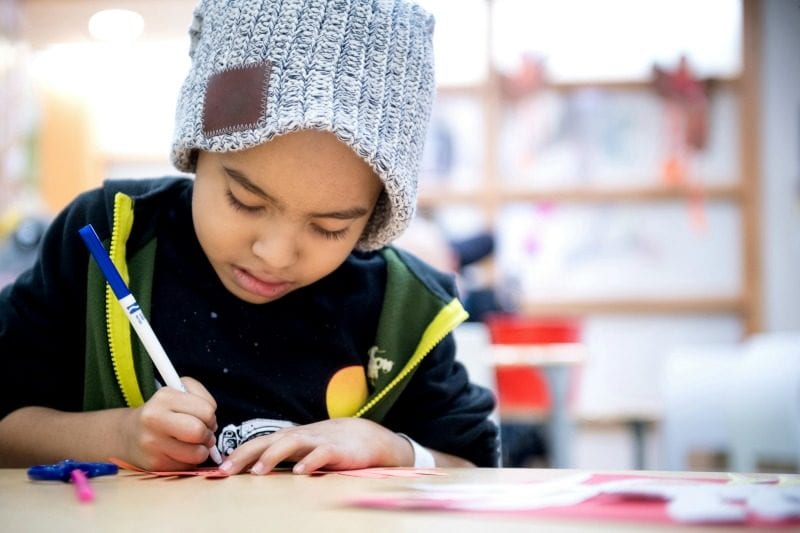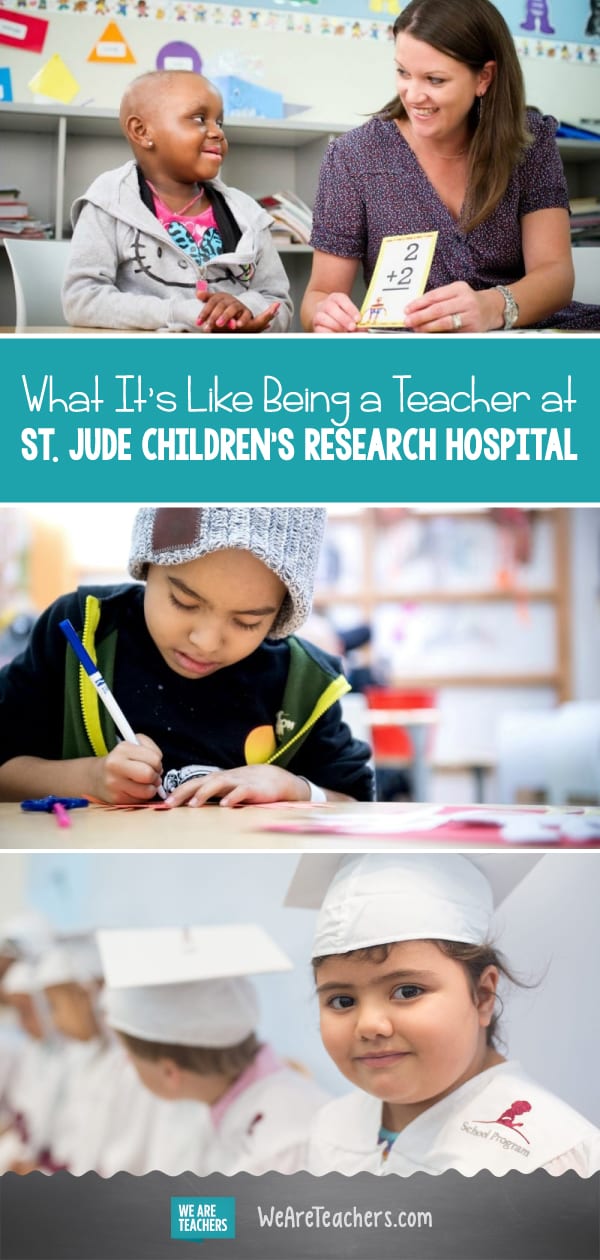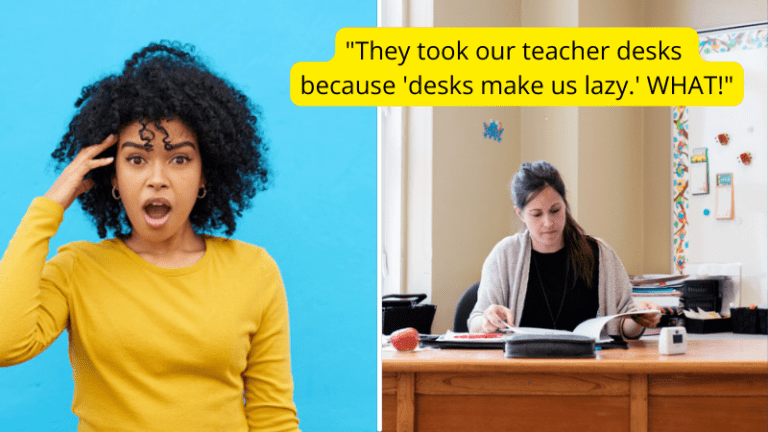Did you know that when children are undergoing treatment at St. Jude Children’s Research Hospital, they attend an on-site school? The St. Jude School Program allows young patients to continue the familiar and reassuring routine of school and keep learning.
We had the chance to interview one of the St. Jude School Program teachers, Michaela Shurden (pictured above). Shurden has been a teacher at St. Jude for 13 years, teaching students in grades K–6 in all subjects. She provided great insights that show how her job is different than that of most classroom teachers. But in other ways, it’s very much the same.
They are teachers at a fully accredited school.
The St. Jude School Program is accredited as a Special Purpose School by AdvancedEd for patients in grades K–12. All teachers are certified, and there are currently six teachers, two ESL coordinators, and three school liaisons. The School Program includes classrooms, a computer learning lab, a parent/family waiting area, and separate teacher offices. The students additionally receive enrichment activities from volunteer teachers as well as several summer camp programs.
[contextly_sidebar id=”AgM1QELfqoGTp91wCJwt4YTu0uakknnI”]
They are a tight-knit community of teachers, just like at traditional schools.
Shurden says that she and her fellow teachers see themselves as a strong team, one of the main similarities between their school program and traditional schools. “We all have our strengths and weaknesses and bring out the best in each other. It’s not uncommon for us teachers to go to each other and ask questions about crazy math problems or get advice on tough situations.”

They partner with students’ home teachers.
Each child enrolled in the School Program receives at least three hours of instruction each week, and their assignments are tailored to the assignments and curriculum of their home teachers.
“Once a student is assigned to me, I am able to contact their school and request that they send me assignments that the teacher is currently teaching in the classroom,” explains Shurden. “If I’m lucky, I get exactly what I need, or at least close to it. I try to stress to the home school that this helps the students stay on the same page as their classmates. It also makes them still feel connected, even though they may be hundreds of miles away.”
They tailor lesson plans when necessary.
Although the St. Jude School Program’s first stop is the student’s home school for assignments, they can also develop their own when necessary. The teachers of St. Jude have standards-aligned curriculum materials for all grades. “If I am not able to get what I need from a student’s home school, we have several resources at our disposal to ensure that students get the education they need and deserve.”
Their days are flexible, which helps them meet students’ needs.
For the teachers and students of the St. Jude School Program, the days are never the same. Shurden says, “Medical appointments run late, appointments get added on, and to be honest, some days our students just don’t feel well, so school is not going to happen. Their medical needs are top priority. Thankfully I know that, so I just go with the flow and try to be as flexible as I can be.”
When they are feeling up to it, students attend lessons in the outpatient classrooms. The teachers can also come to students in their inpatient rooms or in the medicine room while they are getting chemo. “We do whatever we need to make sure our students are learning,” Shurden says.

They provide their students with a bit of normalcy during a challenging journey.
The teachers of St. Jude recognize that school offers their students a feeling of continuity with their lives outside the hospital. “School is such a normal experience, and I feel lucky to help my students keep up that sense of normalcy in a not-so-normal situation. It is important for them to feel like they are keeping up with their friends,” remarks Shurden.
They help students with reentry to their home schools.
The St. Jude School Program strives to ensure that each student receives appropriate educational services to assist their transition into their community school. St. Jude also has three school liaisons who work with students’ home teachers during the reentry process. “Most of our students will need an IEP or 504 plan when they return home. The School Program teachers and the liaisons work as a team to make sure all of this is communicated to the home schools,” explains Shurden.
“We also meet with our families prior to discharge to discuss the accommodations we are suggesting so they can be an advocate for their child as well. Even after their hair grows back and they are back at school full time, our students may still be working through the cognitive, emotional, and social effects of treatment months or years later.”
They love hearing about schools who support St. Jude.
Shurden says that St. Jude School fundraisers provide support that is essential to her students and that hearing about them gives her hope. “As a parent and a teacher, I love that students across the nation are practicing their skills and fundraising for such a great cause! It also makes me feel hopeful for the future. Each donation brings us closer to achieving our mission.”

They love the a-ha moment, just like you.
The teachers of St. Jude have something else in common with teachers everywhere: They get great joy from seeing their students learn. “The best part of my job is seeing the light bulb moment when students learn something new.”
Want to learn more about how your school or classroom can help St. Jude Children’s Research Hospital? Check out these resources:
Host a Math-A-Thon for St. Jude
Kindergarten and Preschool Trike-A-Thons for St. Jude
8 Innovative School Fundraisers for St. Jude
St. Jude Children’s Hospital School Fundraising Site



